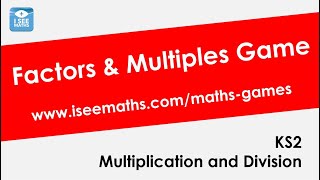
Students can apply for college grants to pay for their education. However, finding them can be difficult. The US Department of Labor provides a scholarship search tool to assist you in your search. This tool allows you to search for college grants by category and type. These grants can be used to fund specific areas of study or may be need-based.
Federal Pell Grant
The Federal Pell Grant, which is a grant program for college, is one of our largest. This federal grant was established in 1972 to provide financial aid to students with low income who wish to go to college. The program awards funds to approximately 1.6 million undergraduate students each year. This program offers students the opportunity to receive $100-$4,000 per year. Although the maximum award is $4,000 for students, most receive less. Average grant amount is $599. Students may be eligible for a larger grant amount if they intend to study abroad.
To be eligible for the maximum Pell grant award, students must meet certain eligibility criteria. Students must earn less that $30,000 per annum. The budget passed by Congress each fiscal year determines the maximum Pell grants. In 2020, the maximum award to college-bound students will rise from $6,400 in 2018-19 to $6,495 for the fall. Students could be awarded less or more than expected.

Federal Supplemental Education Opportunity Grant
Federal Supplemental Education Opportunity Grants (FSEOG) are an option for students looking to get money for college. Similar to the Pell Grant but you have to apply early in the year. This money is only available to those students with high financial needs. It is not repaid.
FSEOG applications require that you fill out a free Application for Federal Student Aid, (FAFSA), form. This form will give you information on how much money you need to attend college. You should apply as soon as possible, since schools only receive a certain amount of funding each school year.
State college grants
Apply for state college grants if you are considering going back to school to complete your bachelor's degree. These grants, which are based on financial need, are intended to help low income families afford college. However, there are some rules that you must follow. These programs are only available to those who meet certain requirements.
There are different requirements for these programs. You should read each grant's details carefully to ensure that you meet all eligibility requirements. Make sure you check the grant amount. For grants to be granted, you must fill out the FAFSA (r). You also need to fill out the PA State Grant Form. This form is not required by most applicants, but you may still qualify if there are financial hardships or you need financial assistance.

Service grants in Iraq and Afghanistan
Undergraduate students interested in joining the armed force can apply for a grant for an Iraq or Afghanistan service award from the federal government. Students who are pursuing a first degree in undergraduate studies and who lost a parent to the war in Iraq and Afghanistan after September 11th, 2001, can apply for this grant. The student must also be under 24 years old and enrolled in a college or university part-time. The Department of Defense will allow students to apply for the grant.
The Iraq-Afghan Service Grant is a college award that honors U.S. troops who died in conflicts in Iraq/Afghanistan. It is similar to the Pell Grant in that it has no family income restrictions. Applicants must have a minimum 3.0 GPA and be in school for at least one semester.
FAQ
What is the difference between college and university?
A university is an academic institution providing higher education. It offers both undergraduate and graduate courses in many fields.
A college is usually smaller than a university and has a lower reputation. It may offer fewer courses but often has its own specialist departments.
What are the different types of early childhood education?
There are many ways you can describe early childhood education. Some of the most popular ones are:
-
Preschool - Children ages 2 to 5
-
PreKindergarten- Children from 4-6 years of age
-
Head Start/ Headstart - Children ages 0 to 3
-
Day Care/ Daycares for children 0-5
-
Child Care Centers for Children from 0-18
-
Family Child Care for Children Ages 0-12
-
Home schooling - Children aged KG to 16.
What are the alternatives to school?
Alternative schools are designed to provide students with learning disabilities with access to education through the support of qualified teachers who can understand their needs.
An alternative school provides children with special educational needs the opportunity to learn in a regular classroom setting.
A lot of help is also available for them when they need it.
Alternative schools do not exist for students who are exclusion from mainstream schools.
They are accessible to all children, regardless if they have disabilities or abilities.
What does it take to be a teacher early childhood?
First you need to decide if your career path is in early childhood education. First, you need to obtain your bachelor's. Some states require that students have a master's level degree.
You may also be required to attend classes during the summer. These courses will cover subjects such as curriculum development and pedagogy (the art or teaching).
Many colleges offer associate degree programs that lead directly into a teaching certificate.
Some schools offer certificates, while others offer bachelor's and master's degrees. However, some schools only offer diplomas.
Additional training may not be necessary if you intend to teach at home.
Statistics
- In most developed countries, a high proportion of the population (up to 50%) now enters higher education at some time in their lives. (en.wikipedia.org)
- They are more likely to graduate high school (25%) and finish college (116%). (habitatbroward.org)
- Globally, in 2008, around 89% of children aged six to twelve were enrolled in primary education, and this proportion was rising. (en.wikipedia.org)
- They are also 25% more likely to graduate from high school and have higher math and reading scores, with fewer behavioral problems,” according to research at the University of Tennessee. (habitatbroward.org)
- Think of the rhetorical power of nineteenth-century abolitionist Harriet Beecher Stowe, Martin Luther King, Jr., or Occupy Wall Street activists with their rallying cry of “we are the 99 percent.” (bostonreview.net)
External Links
How To
How do you apply for scholarships?
You must first determine if you are eligible to receive scholarship funding. You must meet certain criteria to be eligible for scholarships.
You may also be eligible for a grant if your family is financially poor. A vocational training course is eligible to be considered for a work study program. A grant is also available if your group includes a minority.
Once you have determined whether you are eligible for a scholarship type, you can apply.
Online, in-person, or by phone, you can apply. The type of scholarship you are applying for will affect the process.
You may be required to write essays on yourself and the reasons you are applying for scholarships. Others may ask questions such as, "Why did your choose this major?"
Most scholarships require applicants to complete an application form and to send supporting documents.
Your scholarship provider may review your information. If you are chosen, you will receive an email or postal notification.
If you are not chosen, you still might qualify for another scholarship. Contact your scholarship provider for details.